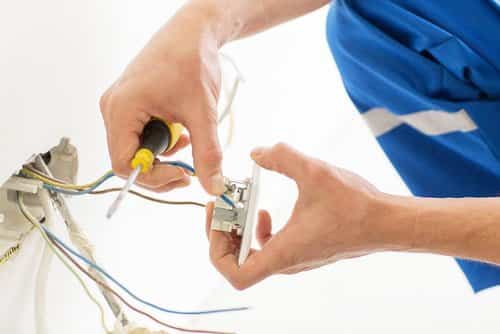Electrical Outlet Anatomy

When the power is on an outlet can t discharge electricity until a plug is fully seated in the clamps.
Electrical outlet anatomy. Wrapping electrical tape over. Electrical receptacles outlets it is not necessary for a receptacle to have something plugged into it for it to cause a fire. An electrical plug and a socket are used to connect devices to the main electrical source in a building. Residential electrical outlets are not very complicated.
It is one of the most commonly used items in a home or building and can be found nearly universally although many countries have different standards or voltages. Anatomy of an electrical outlet all conventional duplex receptacles have two places to plug in devices. Two of the holes are for neutral and hot wire and the third hole in the middle of the outlet serves as a ground wire. It has three holes.
For an outlet to function the hot wire usually a black or blue wire will leave the panel and bring the power to the outlet while a second wire the neutral wire usually a white wire returns the power from the outlet to the electrical panel. A plug is a male connector with two or three contact prongs that connect to slots in the matching female socket allowing electricity to flow through the cord to the device. Electrical plugs and the sockets they connect to work much like a puzzle. The reason that there are two screw terminals on each bus is so that power can be supply to another receptacle or device.
In older homes and some cities steel outlet boxes and armored cable are the rule. Electrical wiring travels from the electrical panel to the outlet with possible stops at other outlets or lighting devices along the way. The gfci is integrated in the electrical outlet and constantly tracks the current flowing in a circuit to sense fluctuations in real time. Steel outlet boxes and armored cable illustration by harry campbell.
Plugs have two or three metal prongs that stick out of a plastic base. Inside the plastic casing are metal clamps designed to hold a plug and these are connected to the terminal screws on the sides. These prongs are often designed so that they can only enter a socket in one way which specifies the way that electricity can flow into and out of the device.



/cdn.vox-cdn.com/uploads/chorus_asset/file/19499891/03_outlet_terms.jpg)














